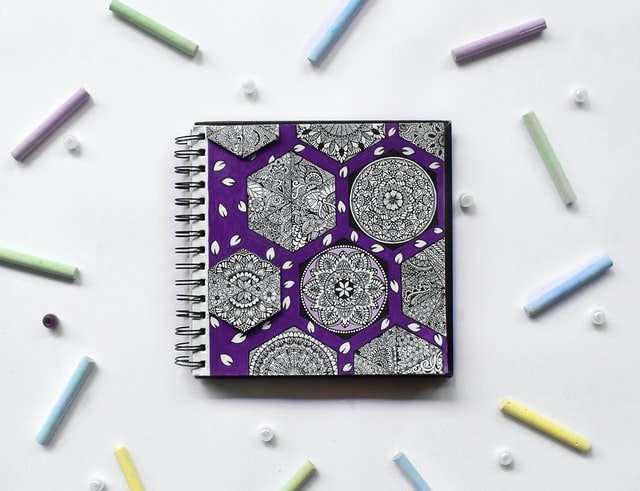Inspirational quotes are everywhere, with many people believing that they can be the one to discover the hidden secrets and unleash the power of these inspirational quotes. Unfortunately, most of these people are only familiar with the inspirational quote itself and not much else.
Trying to understand a inspirational quote without context is like trying to read an entire book by only reading its first chapter. For example, if you were given a copy of this sentence: “You will always fail if you do not invest in your own dreams” without any other context, you would most likely assume that it was giving you an inspirational message about always investing in your dreams.
But what if I told you that this sentence was from a blog post titled “The Dark and Light of Designing Ideas” (which is one of my favorite blog posts)? Suddenly the meaning changes from being an inspirational message to the author’s feelings on how designers should approach their work.
The reason why I bring up this example is because I have seen many people blindly use inspirational quotes as their Twitter bio or as the header for their email signature without even wondering what they mean. And while I do believe that inspirational quotes can provide great motivation (especially when they are ones that you yourself create), there is some danger in blindly using them
Sketching is a powerful tool for designing ideas. It helps you identify problems and solutions, and build confidence in your own thinking. It also helps you to communicate ideas with others. So why are there so few designers who sketch?
One reason is that they believe that they are “not creative.” Sketches don’t look professional, they reason, so the only value sketched work could have is as a first draft of the final product. They think that the only “real” designers are the ones who use Photoshop or Illustrator to make beautiful images. But here’s a secret: those guys are often terrible at generating ideas. Their polished visuals can hide big problems in their design. And they’re not necessarily better at communicating ideas than people who sketch.
Trying to generate ideas with Photoshop or Illustrator is like trying to drive somewhere by looking only in the rear view mirror. You can only see what you’ve already done, and what you have done doesn’t always lead where you want to go. Sketching lets you look out the windshield, where all the interesting stuff happens. And it’s easy! Just grab a napkin or a whiteboard or open up a drawing program on your computer and start drawing. The more sketches you do, the better
A good idea sketch is critical to the design process. It is often tempting to skip this step and jump right into digital software. While computer-aided design (CAD) has made tremendous strides in recent years in the ability to accurately capture an idea, it does not replace the sketching process.
Trying to capture an idea with CAD too soon can often lead to a loss of crucial information and subtleties that are better expressed through freehand sketching. The resulting concept might be unappealing or unattractive because it does not convey all of the necessary information or features. Sketches can be easily adjusted, and those changes can be implemented quickly with little fear of damaging the design intent and overall aesthetic established by the CAD model.
Award winning designer Mike Rohde weighs in….
A sketchbook is a place to experiment with new ideas, and to store the results. It’s not a place to store your finished work; it doesn’t really matter how many times you redo that toilet logo on the right.”
“It is always a good idea to sketch your ideas out first, before you start your project, no matter what it is. It doesn’t have to be something that will be kept forever. Just draw it on a piece of paper or on the back of an envelope, so you can have a visual representation of what your idea is. You can collect these sketches and put them in a little book. When you go back to look at them later, you can see what different things intrigued you at different times.”
The bathroom is where I have my best ideas.
I’m not alone. Many artists and designers use the bathroom as a way to get some quiet time to think, away from the hustle of their day job. I’ve heard of many others who use this technique, including Leonardo da Vinci, Norman Rockwell, Salvador Dali, and John Lennon.
This isn’t just about taking a few minutes to yourself here and there. It’s about creating a ritual around it. You’re going to take up a certain amount of time every day to sit in the bathroom with your notebook where you can be comfortable, free from distractions in the house, and have full access to your thoughts.
The bathroom is an ideal environment for creative thinking because it is one of the few places that is relatively free from distraction. The only person you have to worry about disturbing is probably not very picky about noise levels in the middle of their morning routine anyways. The bathroom also has a nice balance between being dark enough to stimulate your mind, but also light enough that you can see clearly what it is you are drawing. This allows you to create new designs in an unencumbered way.
Staying focused during your creative time in the bathroom can be difficult at first if you
Doodling is fun and often helps you to relax. In fact, doodling can also have some benefits for your learning. Here are some reasons why doodling is a good learning skill.
1. Doodling Can Improve Your Memory
When people learn a new set of information, the brain stores it in two places: short-term memory and long-term memory. Doodling can help you to remember new information by keeping it in short-term memory for longer. You might find that you are able to recall an idea from your doodles in the future when you need it again.
2. It Improves Your Attention Span
Doodling takes very little effort and keeps your mind from wandering as well as improving your attention span. Doodling is a way to keep you focused on taking notes or reading for long periods of time without becoming bored or frustrated about not being able to remember what you have read or written down later on.
3. It Can Help You Gain Understanding of Information
Doodles can be used as a visual reminder of what you have read or written down while studying or taking notes during class. For example, if you were taking notes on how to make an apple pie, your drawing may include pictures


